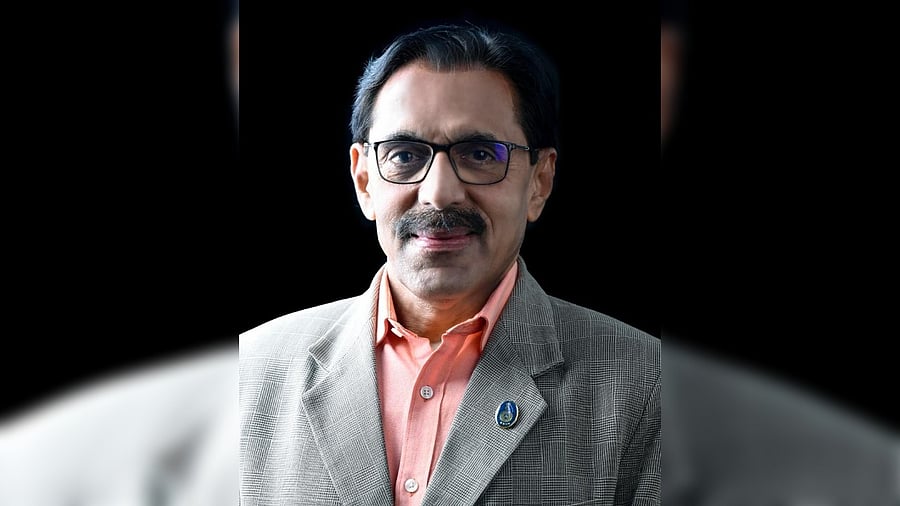
P M Nair, former chief of the National Disaster Response Force (NDRF)
P M Nair, former chief of the National Disaster Response Force (NDRF), shares with DH's SNV Sudhir his views about the rescue mission launched after the SLBC tunnel collapse in Telangana. He also talks about India’s disaster management capabilities.
Excerpts:
How do you evaluate the rescue operation launched after the SLBC tunnel collapse?
Every disaster presents unique challenges, making it impossible to apply a standard yardstick. The ongoing rescue efforts are commendable, with human efforts being supported by sophisticated technology. Unlike building collapses, where untrained individuals might help, tunnel collapses demand precise technological intervention. Even deciding where to drill is critical because a wrong choice could cause more harm. Tunnels are complex systems with interlinked electrical, mechanical, and structural components, requiring meticulously crafted rescue plans.
Do you believe the authorities have handled this with sufficient caution?
The approach has been appropriately cautious. You can't bulldoze your way through. Indiscriminate use of heavy equipment could worsen the situation. A careful approach may cause delays, but it is ultimately safer.
What key lessons can be learnt from this incident?
One recurring issue is human error, often caused by complacency. Security becomes second nature, and then people get careless, especially when fatigue sets in. That’s when leaders and supervisors must intervene. Constant reminders, security refreshers, and alertness checks are essential. Take, for example, a security constable assigned to a VIP movement. If the VIP is delayed for hours, the constable stands exposed to the elements, and fatigue sets in. Expecting the same level of alertness from that individual throughout the day is unrealistic. The solution is effective management — rotating personnel, ensuring they are well-rested, and maintaining their focus. I’m not sure if this was applied in the SLBC case, but it's a critical takeaway. If you are observant and vigilant, you can often spot indicators before a disaster occurs. These early warning signs should alert the right people to take preventive action. Carefulness in advance can prevent major incidents.
Does India have adequate disaster response mechanisms?
India's disaster response capabilities rank among the best globally. During the 2011 Japanese tsunami and nuclear disaster, Indian teams stayed longer than other foreign teams despite dangerous radiation levels. Our disaster response teams consistently receive praise for their compassion, technical skill, and professionalism in global operations.
Is there a need for a more comprehensive legal framework to deal with such disasters?
The government has already taken proactive steps. The Disaster Management Act was amended in 2025, making it more modern, accountable, and robust, a vibrant legal instrument applicable to all disaster types, including tunnel collapses.
How has India's disaster response evolved in recent years?
There's been a notable transformation. In 2011-12, teams returning after completing disaster response missions received little recognition. Now, the prime minister and home minister personally greet and honour them. This recognition boosts morale significantly and becomes a force multiplier. Motivation, combined with technology and skill, leads to extraordinary outcomes.
What are the technological advancements that should be integrated into disaster response?
Artificial Intelligence must be incorporated. It can predict high-risk areas and suggest management plans tailored to local conditions. Kerala provides an excellent example. After empowering local panchayats following the 2018 floods, casualties dropped significantly by 2019. AI can also evaluate past incidents to identify areas where improvements are needed, providing insights beyond human capability alone.
How does India's disaster management compare with international practices?
India's model is perhaps the best globally. Unlike other countries that integrate disaster roles within existing military or police forces, we have a dedicated NDRF with multiple battalions of specially trained personnel. The NDRF not only responds to disasters but also proactively engages in familiarization exercises in disaster-prone areas. Many states also have their own disaster response forces, creating a unique dedicated structure.
How do countries like the US or other developed countries deal with disasters?
In many developed countries, disaster response tends to be fragmented. Despite technological advancements, they often struggle during major events like wildfires, reflecting deeper structural challenges. Many lack grassroots-level involvement. India's strength lies in community engagement down to the panchayat level, using local technology and knowledge rather than solely top-down approaches.
What role should private contractors play in avoiding disasters and ensuring the safety of construction workers?
Every major construction company should incorporate disaster management from planning through execution. This includes educating everyone involved about risks and mitigation strategies. The workers, particularly the ones from other regions, need proper guidance and oversight. A dedicated disaster management wing should train workers and help them understand how their specific roles affect disaster outcomes.